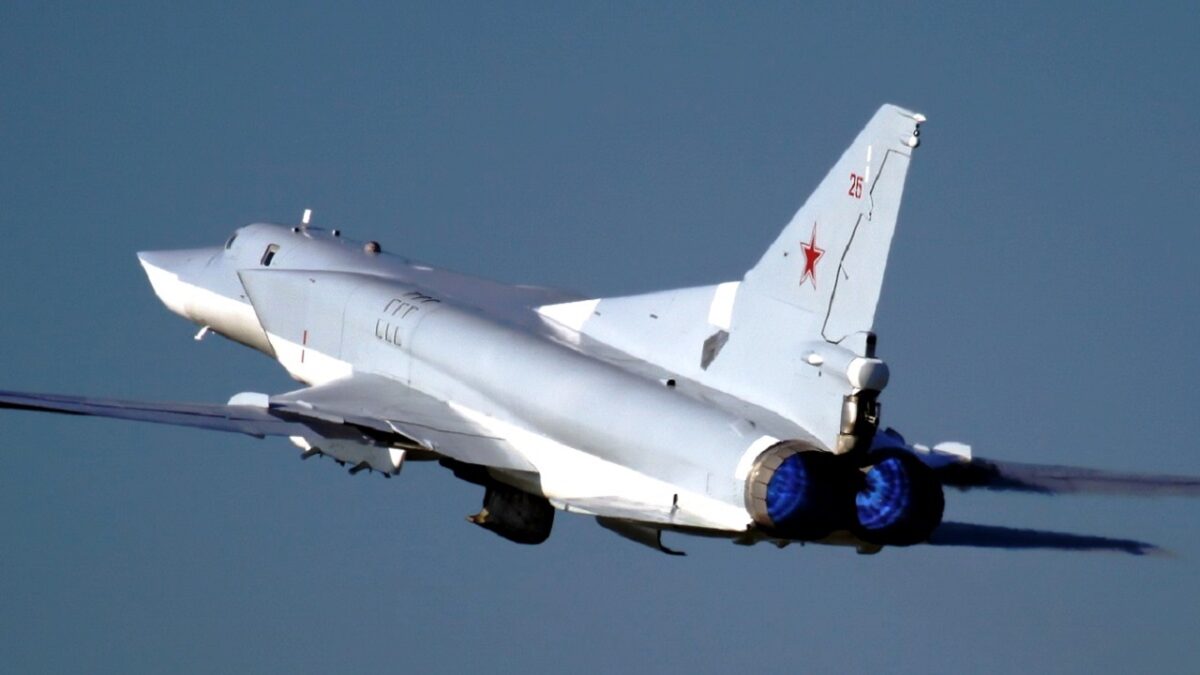Russia‘s failure to achieve air superiority in Ukraine has been described as one of the most significant missteps that Moscow has made. As The Atlantic reported this month, airpower should have been one of Russia’s most significant advantages over its smaller neighbor. The Russian Air Force had been expected to play a vital role in the invasion, one that could have allowed the ground forces to drive deep into Ukraine and seize Kyiv.
It wasn’t for lack of experience or capability. Russia has almost 4,000 combat aircraft and it has experience with bombing targets in Syria, Georgia, and Chechnya.
Perhaps seeing the missed opportunity, in recent weeks, Moscow has deployed its force of modernized Tu-22M3 bombers armed with Kh-22 missiles to target the Ukrainian railway system. Such operations were initially conducted with cruise missiles including the Kh-101 and Kh-555 and launched from the Tupolev Tu-95 and Tu-160, but in recent weeks a switch was apparently made to the Tupolev Tu-22M3 (NATO reporting name “Backfire”).
According to a report from TheAviationGeekClub, Russian ordnance is being depleted faster than it can be replaced – and as a result, Russians have deployed older stocks of the Kh-459 (“AS-13 Kingbolt”) and other Cold War missiles.
A video that circulated online purported to show the release of two Kh-22 (“AS-4 Kitchen”) Soviet-era heavy anti-ship missiles from the Backfire bomber. The Kh-22 is notable, as it is likely far older than any of the pilots in the Tu-22M3 bombers – as it dates back to the 1960s. Designed to strike ships or heavily-protected targets on land, it was far from a precision missile. It had a circular error probably (CEP) of about three miles, and as a result, was typically equipped with a nuclear warhead.
Launch of two supersonic cruise missiles Kh-22 from Tu-22M3 on targets in Ukraine pic.twitter.com/6klrovfwhz
— ZOKA (@200_zoka) May 11, 2022
The Kh-22 is powered by a Tumanski liquid-fuel rocket engine, fueled with TG-02 (Tonka-250) and IRFNA (inhibited red fuming nitric acid), giving it a maximum speed of Mach 4.6 and a range of up to 600 km (320 nmi). The first service-ready missiles were introduced in 1962, yet it took 60 years for it to see actual use in combat.
It has been suggested that the war in Ukraine is now just a way for Moscow to get rid of its aging Cold War ordnance.

Tupolev Tu-22M Strategic Bomber Aircraft 4

Russia’s Tu-22M3 bomber. Image Credit: Creative Commons.

Russia’s Tu-22M3 Bomber. Image Credit: Creative Commons.

Russian Tu-22M3 Bomber. Image Credit: Creative Commons.

Tu-22M3 aircraft from Russia. Image Credit: Creative Commons.
Meet the Tu-22M3
The aircraft carrying the Kh-22 are also showing their age. The Tu-22M3 is a modernized version of the Cold War long-range bombers that first entered service in the late 1950s and which were designed to strike ground and sea targets with supersonic missiles and bombs. The bombers have an operating range of 7,000 km and are capable of carrying nuclear weapons. The Tu-22M3 model, which was developed in the early 1980s, officially entered service in 1989. It was one of the few Soviet bombers to see combat when it was used at the end of the Russian-Afghan War.
Russia currently maintains a force of more than 100 Tu-22M bombers in all configurations.
Now a Senior Editor for 1945, Peter Suciu is a Michigan-based writer who has contributed to more than four dozen magazines, newspapers and websites. He regularly writes about military hardware, and is the author of several books on military headgear including A Gallery of Military Headdress, which is available on Amazon.com. Peter is also a Contributing Writer for Forbes.

